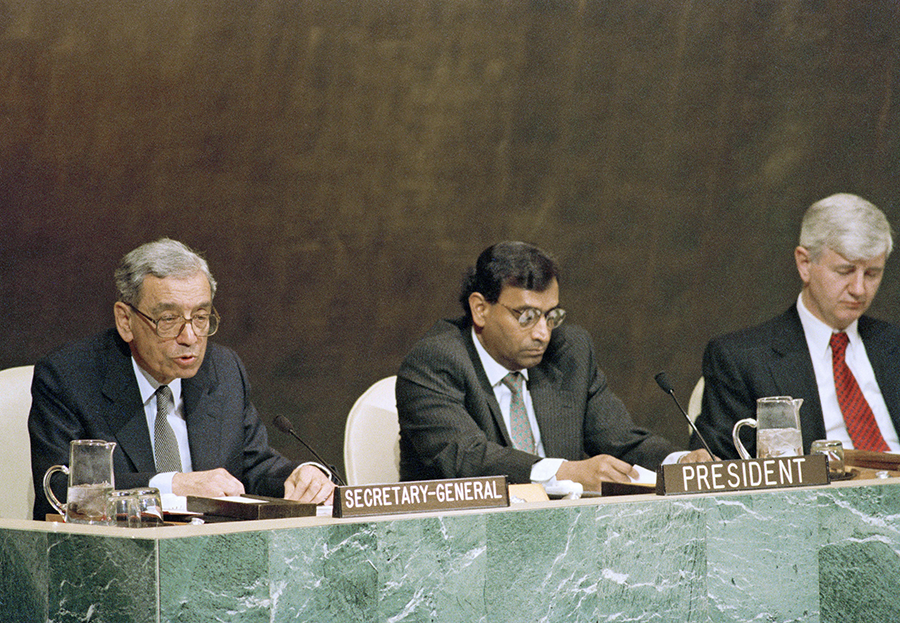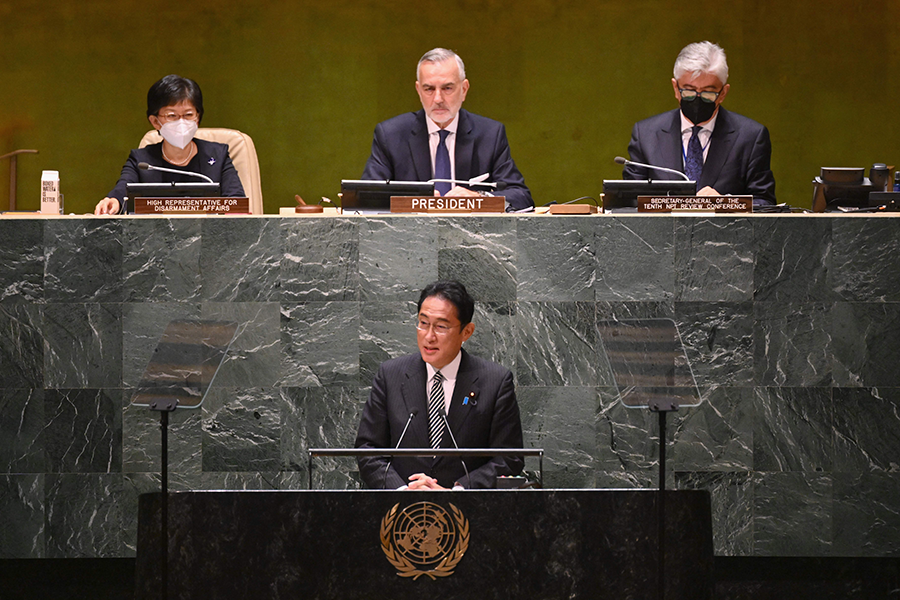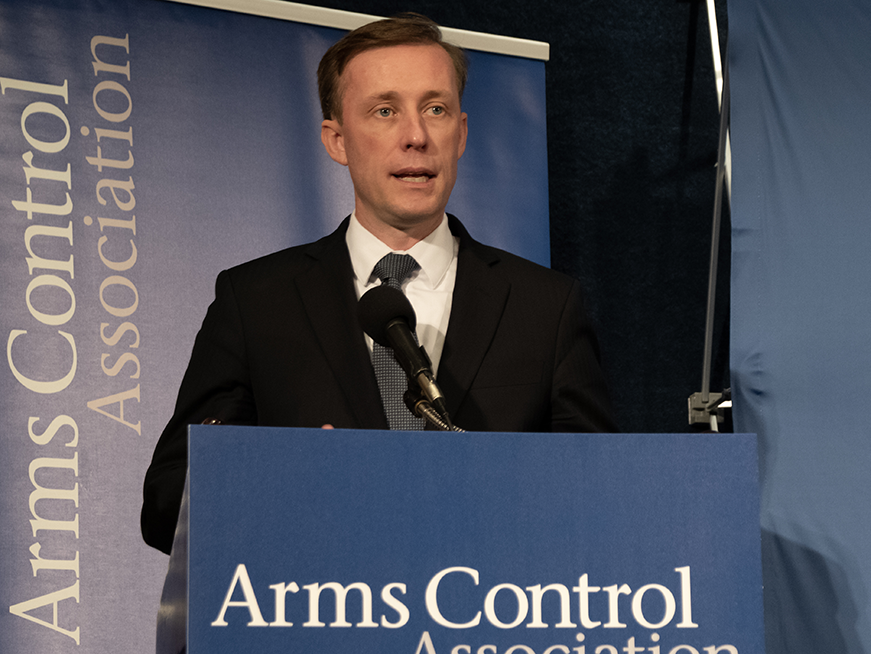For more than 50 years, the nuclear Nonproliferation Treaty (NPT) has served as an invaluable foundation for the international nonproliferation regime. However, the 11th NPT review cycle set to begin with the first Preparatory Committee this summer faces a daunting array of issues. Prospects for U.S. arms control with Russia appear fragile, the war in Ukraine continues to threaten the safe operation of nuclear facilities, and it is unclear whether the 2026 Review Conference will succeed or fail—as was the case in 2022—to reach a consensus final document.
 Though the NPT has withstood these and other challenges thus far, the review cycle risks devolving into an empty exercise if states-parties cannot agree upon and implement ways to further treaty aims. The NPT can gain traction again, but only if member states take urgent action on advancing the most fraught pillar of the treaty: the Article VI obligation for nuclear-weapon states to engage in arms control and pursue nuclear disarmament. A worsening international security environment, a lack of disarmament progress, and the threat of nuclear arms racing have compounded this issue. Nuclear-weapon states and non-nuclear-weapon states must cooperate on Article VI to strengthen the NPT.
Though the NPT has withstood these and other challenges thus far, the review cycle risks devolving into an empty exercise if states-parties cannot agree upon and implement ways to further treaty aims. The NPT can gain traction again, but only if member states take urgent action on advancing the most fraught pillar of the treaty: the Article VI obligation for nuclear-weapon states to engage in arms control and pursue nuclear disarmament. A worsening international security environment, a lack of disarmament progress, and the threat of nuclear arms racing have compounded this issue. Nuclear-weapon states and non-nuclear-weapon states must cooperate on Article VI to strengthen the NPT.
Worsening Security Environment
Strategic competition between nuclear powers, Russia’s unprovoked invasion of Ukraine, and the perennial threats posed by Iran and North Korea have all contributed to an increased sense of insecurity from non-nuclear-weapon states, many of which shelved their own nuclear weapons programs or gave up inherited weapons to join the NPT.
Recent overtures by Saudi Arabia for U.S. security guarantees, persistent South Korean interest in developing a domestic nuclear weapons program, and the vocal concerns of Treaty on the Prohibition of Nuclear Weapons (TPNW) members about nuclear threats highlight the effects of the current security paradigm.
 The NPT was created under a less-than-hospitable security environment and should be leveraged to temper vertical proliferation once again. Through nine difficult years of negotiation amidst intense Cold War arms racing in the 1960s, a broad consensus to stem the further spread of nuclear weapons emerged, leading to the conclusion of NPT negotiations in 1968 and its entry into force in 1970 (see ACT, June 2018).
The NPT was created under a less-than-hospitable security environment and should be leveraged to temper vertical proliferation once again. Through nine difficult years of negotiation amidst intense Cold War arms racing in the 1960s, a broad consensus to stem the further spread of nuclear weapons emerged, leading to the conclusion of NPT negotiations in 1968 and its entry into force in 1970 (see ACT, June 2018).
When the treaty opened for signature, the global nuclear inventory stood at over 39,000 warheads. Stockpiles have decreased by over 80 percent from Cold War heights, and of the over 50 states that could have pursued a nuclear weapons option, only nine have nuclear weapons today. The NPT has also spurred talks for disarmament, helped lead to the establishment of several more nuclear-weapon-free zones, helped spur an end to nuclear testing and the creation of the Comprehensive Test Ban Treaty of 1996, and enabled wider use of atomic energy for peaceful purposes through a stringent safeguards regime. With 190 state signatories, the NPT enjoys widespread support in the international community today.
Lack of Disarmament Progress
The NPT hinges on a “grand bargain” that links disarmament with nonproliferation: nuclear-armed states pledged “to pursue negotiations in good faith on effective measures relating to cessation of the nuclear arms race at an early date and to nuclear disarmament,” and share peaceful nuclear technology, while non-nuclear-weapon states agreed to comply with safeguards and refrain from seeking nuclear weapons. As such, disarmament, nonproliferation, and the peaceful uses of nuclear technology have become the essential three pillars of the nonproliferation regime.
A major source of tension during the negotiation of the treaty was that non-nuclear-weapon states insisted on the inclusion of a disarmament clause; four out of five nuclear-weapon states (China, the United States, France, and the Soviet Union) opposed it. A commitment to disarmament was eventually incorporated, albeit without a specified time frame. At recent NPT Review Conferences, states have made more specific pledges on disarmament: the 2000 RevCon agreed upon “13 Practical Steps” for nuclear disarmament, bolstered by a 64-point action plan adopted at the 2010 RevCon.
 However, non-nuclear-weapon states have grown increasingly frustrated by the lack of meaningful action by nuclear-weapon states on disarmament obligations over the past two RevCons. Negotiators at the 2022 RevCon noted the lack of “any forward movement” on “pillar one,” and the Non-Aligned Movement, representing over 100 states, has rightfully declared the neglect of disarmament “counterproductive and unsustainable” when other core goals of the NPT derive their legitimacy from the “larger objective” of disarmament. Member states undoubtedly share a desire for the treaty to succeed, but ensuring continued compliance in nonproliferation necessitates that nuclear-weapon states uphold their part of the bargain.
However, non-nuclear-weapon states have grown increasingly frustrated by the lack of meaningful action by nuclear-weapon states on disarmament obligations over the past two RevCons. Negotiators at the 2022 RevCon noted the lack of “any forward movement” on “pillar one,” and the Non-Aligned Movement, representing over 100 states, has rightfully declared the neglect of disarmament “counterproductive and unsustainable” when other core goals of the NPT derive their legitimacy from the “larger objective” of disarmament. Member states undoubtedly share a desire for the treaty to succeed, but ensuring continued compliance in nonproliferation necessitates that nuclear-weapon states uphold their part of the bargain.
The fact that the NPT Review Conferences function on the basis of consensus decision-making makes genuine consideration of non-nuclear-weapon states’ views particularly salient. Even though the option of voting by majority when consensus cannot be reached exists, it has never been used. This has created a unique platform whereby, at least nominally, any group of non-nuclear-weapon states can influence results as much as the nuclear-weapon states.
The value in forums where parties that disagree must work toward compromise solutions cannot be overstated. Consensus decision-making strengthens any substantive outcomes that are achieved and protects the long-term health of the treaty. But it also can create obstacles. At the 2022 RevCon, non-nuclear-weapon states made major concessions, including extremely weak language on disarmament, to achieve consensus. Nonetheless, the 2022 RevCon failed due to a last-minute Russian objection, and not because nuclear-weapon states and non-nuclear-weapon states could not bridge their differences. This shows the inherent value of preserving the NPT as a substantive forum. Nuclear-weapon states should not, however, take the continued political will of non-nuclear-weapon states to negotiate for granted, especially when non-NPT frameworks such as the TPNW aim to produce concrete roadmaps for disarmament.
Threat of Arms Racing
The two major nuclear powers—the United States and Russia—have led the world into a dangerous state of nuclear competition. The New START Treaty, due to expire in 2026 with no replacement being negotiated, serves as the last remaining instrument capping the size of the United States and Russia’s nuclear arsenals.
Moreover, new challenges have emerged involving the other three nuclear-armed members of the NPT, particularly China, which has embarked on a dramatic expansion of its own nuclear arsenal while rebuffing criticisms of its actions and refusing to engage in arms control dialogue.
“The deteriorating situation is the product of more than a decade of neglect of disarmament diplomacy in key capitals,” writes a coalition of NGO experts in a statement to be delivered at the 2023 PrepCom, “None of the five NPT nuclear-armed states can credibly claim they are meeting their NPT disarmament obligations.”
An unconstrained arms race between the U.S., Russia, and China would be detrimental to the NPT. Vertical proliferation would further degrade the standing of nuclear-weapon states in treaty conferences, perpetuate an existing vacuum in P5 political leadership, and create a more dangerous world. Moreover, although arms control initiatives only partially fulfill Article VI obligations, the pursuit of any disarmament progress will prove impossible without the limitation of major strategic arsenals—especially that of the United States and Russia.
Instead of accepting the renewed salience of nuclear weapons in backstopping security concerns, the current security paradigm presents the perfect opportunity to bridge the perpetual discord between non-nuclear-weapon states and the P5.
Steps Forward
An increasingly fraught strategic environment does not preclude nuclear-weapon states from committing to disarmament progress; rather, it provides more reason for concrete action during the next review cycle.
In a working paper submitted for PrepCom 2023, the New Agenda Coalition asserts that “times of international tension are precisely when multilateralism, arms control, and nuclear disarmament measures have proven most useful.” The United States and the Soviet Union signed the Limited Test Ban Treaty and created a ‘hotline’ to mitigate the chance of accidental nuclear war the year after the Cuban Missile Crisis. Nuclear-weapon states do not need another close call to understand the need for cooperation in mitigating nuclear risks.
Though non-nuclear-weapon states consider nuclear risk reduction an interim solution that cannot substitute and may even detract from disarmament obligations, it remains one of the most workable measures for reducing disarmament tensions. Non-nuclear weapon states should pressure the P5 to deliver on risk reduction, collaborate with the P5 on engaging non-NPT nuclear-armed states, and call for a consensus statement that condemns threats of nuclear use and stigmatizes nuclear brinkmanship.
The P5 must accelerate and upgrade ongoing expert-level talks on reducing the risk of nuclear war. It is imperative these discussions work towards clear, tangible mechanisms for nuclear risk reduction, such as the reopening of military communications and the creation of joint early-warning centers.
Additionally, though New START has been suspended, the United States and Russia have committed to adhering to the central treaty limits on strategic arsenal sizes and should call on the rest of the P5 to likewise cap their nuclear forces.
If non-nuclear-weapon states, including those in the Non-Aligned Movement, want to advance progress on disarmament, they should consider stepping up diplomatic pressure on Russia and China to engage with the rest of the P5 who are actively and jointly seeking progress on formal and informal arms control and strategic stability measures. Additionally, they should consider reiterating their “strong support” of measures to halt the production of fissile material.
 Finally, the United States should follow through on National Security Advisor Jake Sullivan’s declaration that the United States is willing to engage diplomatically with Russia on arms control “without preconditions.”
Finally, the United States should follow through on National Security Advisor Jake Sullivan’s declaration that the United States is willing to engage diplomatically with Russia on arms control “without preconditions.”
Kremlin spokesperson Dmitry Peskov welcomed the “positive statement” by Sullivan and called for continued discussion through formal diplomatic channels. To date, the two sides have not agreed to such a dialogue.
A robust NPT benefits all treaty members, protecting their core interests by stemming the tide of proliferation. As global nuclear peril surges, the treaty will become increasingly strained.
However, the uncertain strategic environment, rather than being an impediment to progress, underscores the need for NPT states to use the treaty as a forum to prevent a catastrophic reversal in the reduction of global nuclear stockpiles. Now is the time to turn frustration into momentum and bridge the discord on disarmament before the rift worsens.
